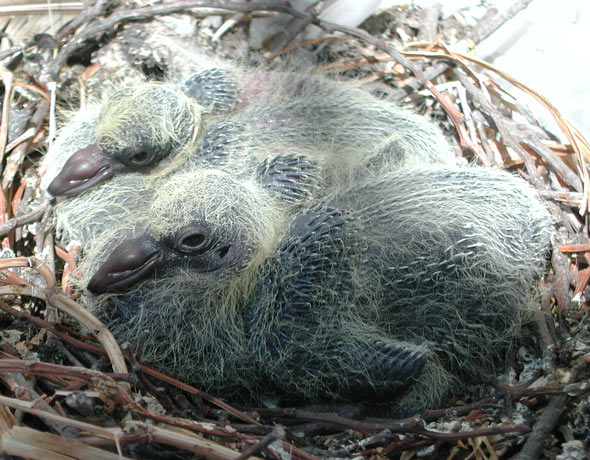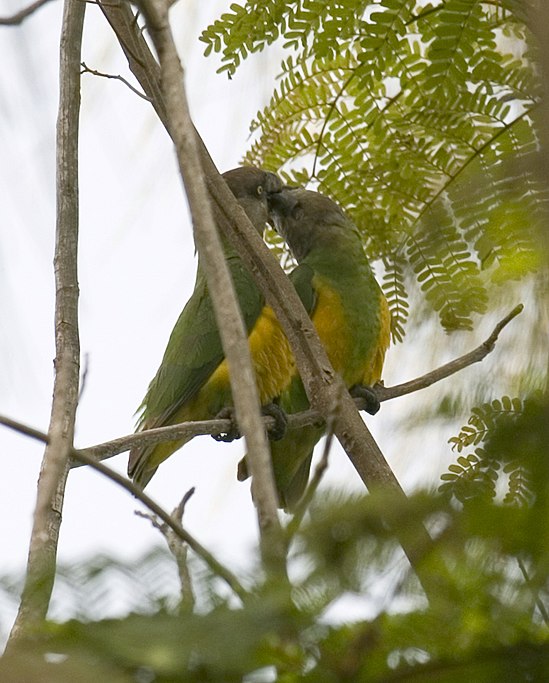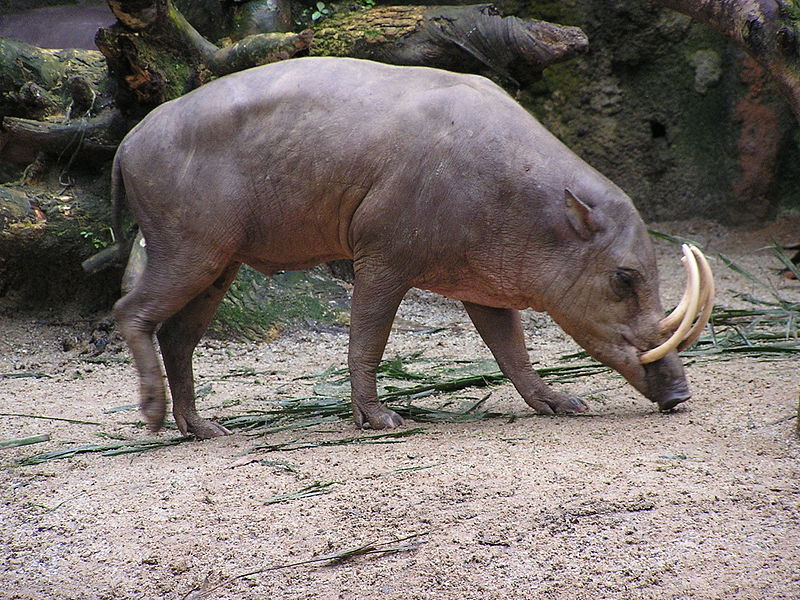Today I’d like to highlight an interesting new idea that could be of great benefit to parrots and parrot owners everywhere. A petition posted on the Causes.com website asks the Animal Planet Network to air shows concerning the potential problems involved in parrot ownership, with a view towards reaching people before they purchase a parrot. I was made aware of this important effort via George Sommer’s wonderful weekly column From the Parrot’s Beak. George’s updates, carried by the Boston Fish and Bird Examiner, are packed with husbandry tips, stories, links to conservation articles and much more –I heartily recommend signing up for his email mailing list. Read More »
Hand-Rearing Young Pigeons and Doves
 A ThatBirdBlog reader in Bangkok, Thailand recently contacted me concerning the hand-rearing of Zebra Dove nestling whose parents had been attacked by a crow. The incident reminded me that spring is on the way, and with it will come a number of calls concerning young pigeons and doves (or “squabs”), that have fallen from their nests or have otherwise become orphaned. Those who keep pigeons and doves as pets, or who “fly” them as a hobby, are also sometimes called upon to raise abandoned nestlings.
A ThatBirdBlog reader in Bangkok, Thailand recently contacted me concerning the hand-rearing of Zebra Dove nestling whose parents had been attacked by a crow. The incident reminded me that spring is on the way, and with it will come a number of calls concerning young pigeons and doves (or “squabs”), that have fallen from their nests or have otherwise become orphaned. Those who keep pigeons and doves as pets, or who “fly” them as a hobby, are also sometimes called upon to raise abandoned nestlings.
Crop Milk
Pigeons and doves depart radically from other birds when it comes to rearing their chicks. Rather than providing them with insects or fruit, breeding adults produce a semi-solid nestling food known as pigeon milk or crop milk. While not related to mammalian milk, there certainly are some parallels.
The “milk” is secreted from the lining of the crop, which is a food storage organ located at the end of the esophagus (base of the throat) of most birds. It is higher in protein (38%) and fat (58%) than both cow and human milk, and allows for very rapid growth. Crop milk also contains several vitamins and minerals, and is produced by both males and females. Read More »
Breeding Large Parrots in Indoor Cages – Tricky but Possible
 A great deal has been written on the value of large outdoor aviaries to parrot breeders. I agree, but this need not prevent those without access to outdoor facilities from experimenting. Well-habituated pairs of African Gray, Amazon and other fair-sized parrots have nested in spacious, indoor cages.
A great deal has been written on the value of large outdoor aviaries to parrot breeders. I agree, but this need not prevent those without access to outdoor facilities from experimenting. Well-habituated pairs of African Gray, Amazon and other fair-sized parrots have nested in spacious, indoor cages.
Simulating Seasonal Changes
Birds housed outdoors are often stimulated to come into breeding condition by natural fluctuations in temperature, humidity and day length. While seasonal changes will exert some effect on indoor birds, it is important for us to step in and “help nature along” when it comes to house-bound birds. Read More »
Simple, Effective Ways to Heat your Bird’s Cage or Bird Room
 This winter’s severe weather has many bird owners re-thinking the ways in which they provide heat to their pets (and to themselves!). Late winter, spring and autumn can be even trickier than mid-winter, as warm days and frigid nights often arrive back-to-back.
This winter’s severe weather has many bird owners re-thinking the ways in which they provide heat to their pets (and to themselves!). Late winter, spring and autumn can be even trickier than mid-winter, as warm days and frigid nights often arrive back-to-back.
Note: be sure to check with an electrician before adding any heating elements to your home, and to follow the manufacture’s directions carefully. When using heat bulbs, be aware that household fixtures may not be suitable – most require the use of a ceramic fixture.
Oil-Filled Radiators
One of the best options for heating entire rooms is the oil-filled radiator. I have used these with great success in bird and reptile holding rooms in several zoos, as well as at home.
Oil-filled radiators provide even heat throughout the entire room, so that extra-hot or cool spots are eliminated. They are especially useful for those keeping several birds, as the need for individual bulbs and fixtures for each cage is eliminated. I have also relied upon oil-filled radiators when living in especially cold or drafty homes, as operating one was less expensive, and more effective, than heating the entire house.
I’ve not compared the various brands, but have found DeLonghi Oil-Filled Radiators to meet my needs admirably. I especially like the fact that their thermostats, once set, maintain temperature without further adjustment.
Incandescent Heat Bulbs
Heat-producing bulbs are generally associated with reptile care, but they are widely used in zoos to provide a warm spot for birds. While they can heat entire cages, their main value lies in their ability to provide a warm “basking site”.
As most birds are kept in open-barred cages, incandescent bulbs are perfect for providing some additional warmth without over-heating the entire enclosure (as can happen in glass aquariums housing reptiles). They are also useful for sick or newly-fledged birds. Several models provide UVA light, which has been shown to be of value to many species, as well as heat.
Red or black night-viewing bulbs, also marketed primarily for reptiles, are useful at night, or in situations where additional daytime illumination is not needed; birds do not sense the light they emit and hence will not be disturbed while sleeping.
Ceramic Heat Emitters
 Infra-red ceramic heaters, available in 40-250 watt strengths, provide warmth without light and so can be used by day and night.
Infra-red ceramic heaters, available in 40-250 watt strengths, provide warmth without light and so can be used by day and night.
In my experience, ceramic heaters spread heat over a wider area than do incandescent heat bulbs, but do not provide the room-wide coverage that is possible with oil-filled radiators.
Full Spectrum Lighting
Light is important to birds for reasons other than heat generation. More and more studies are showing that UVA and UVB radiation helps maintain strong immune systems, and encourages natural activity levels and breeding. Full spectrum bulbs designed especially for birds are now readily available; please see the article below for further information.
Further Reading
Full Spectrum Lighting for Birds
Heating and Housing Sick Birds
Crimson Sunbird image referenced from wikipedia and originally posted by Lip Kee Yap
The Ornate Lorikeet – the World’s Most Colorful Parrot? – Part 1
 “Most colorful” is a tough title to clench in the parrot world. The Ornate Lorikeet, Trichoglossus ornatus, however, must surely be a top contender. In fact, the name “ornate” does it little justice, as would any description of its plumage. No longer commonly kept in the USA, this is a bird worth searching for in zoos or among large private collections.
“Most colorful” is a tough title to clench in the parrot world. The Ornate Lorikeet, Trichoglossus ornatus, however, must surely be a top contender. In fact, the name “ornate” does it little justice, as would any description of its plumage. No longer commonly kept in the USA, this is a bird worth searching for in zoos or among large private collections.
Description
The Ornate Lorikeet’s feathers span the rainbow – most are bright green edged in yellow, deep blue or brilliant red edged in dark blue, but there are other colors as well. The eyes are orange and the beak is a “screaming” orange-red. It’s hard to imagine all the color that is packed into its 10-inch-long body (please see photo)!
Range and Habitat
Indonesian island of Sulawesi, just east of Borneo, is home to an incredible array of animal “standouts” – black, ape-like monkeys, giant gliding possums and babirusas (odd pigs sporting tusks that grow right their skin, please see photo), to name just a few. So it seems fitting that a bird so uniquely-colored as the Ornate Lorikeet is found here, and on a few offshore islands, and nowhere else on earth.
Ornate Lorikeets favor mountain forest edges and overgrown scrub, and also frequent villages bordered by dense cover (imagine having these fellows as feeder visitors!). They are most commonly seen in pairs or small flocks and feed upon flower blossoms, nectar, pollen, fruit and some greens; insects may be taken as well, but field studies are lacking.
Captive History
 I recall caring for Ornate Lorikeets when working for a bird importer as a teenager, but they are not at all common in the USA today. They have a reputation for being quite delicate as regards temperature, and even long term captive seem prone to respiratory and digestive system distress. When in the peak of good health, their voices are as loud, and far harsher, than are their colors!
I recall caring for Ornate Lorikeets when working for a bird importer as a teenager, but they are not at all common in the USA today. They have a reputation for being quite delicate as regards temperature, and even long term captive seem prone to respiratory and digestive system distress. When in the peak of good health, their voices are as loud, and far harsher, than are their colors!
On to diet and general care in Part 2.
 That Bird Blog – Bird Care and History for Pet Birds
That Bird Blog – Bird Care and History for Pet Birds
